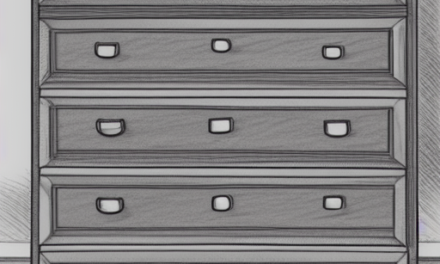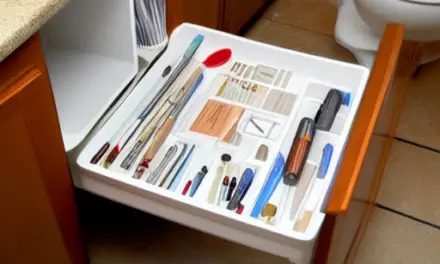A variety of pomeranian dog health issues can affect your pooch, including a common skin condition known as sebaceous adenitis. This condition causes dry skin and patches of hair loss. It typically develops between one and five years of age. Treatment for this condition involves fatty acid supplements and special shampoos. Early detection of the problem can improve treatment outcomes.
Hypothyroidism
A dog suffering from hypothyroidism can experience thinning of the hair and skin, as well as stress and trauma. There are a variety of treatments that may help to treat this condition, including vitamin E supplements and a diet low in fat. Your vet can also prescribe medication to correct the issue.
Fortunately, the treatment for hypothyroidism is relatively inexpensive and easy to implement. Your veterinarian will order blood tests and may prescribe specific doses of the manmade hormone levothyroxine, or L-thyroxine. During the treatment process, your pomeranian will be given the medication until the hormone levels stabilize.
Because hypothyroidism can be a slow-developing condition, it may not be immediately apparent. This is because the condition is often mistaken for other diseases. For this reason, it is essential to make a proper diagnosis and prescribe the appropriate treatment. Luckily, many veterinarians recommend routine blood testing for older and middle-aged dogs to check thyroid levels.
Hydrocephalus
Hydrocephalus is a serious health issue that is associated with a large brain, which can cause a variety of symptoms, including trouble walking and behavioral changes. It is caused by an accumulation of cerebrospinal fluid, or CSF, within the skull, causing pressure on the brain. The symptoms include a large head, enlarged forehead, and an overall skull size that is much larger than normal.
Hydrocephalus is most often genetic. Some dogs develop the condition due to a faulty gene in the conversion of vitamin A, which results in a high risk of developing the condition. It’s important to seek a veterinarian if you suspect your pomeranian is suffering from hydrocephalus.
Early diagnosis is vital to the success of treatment. In severe cases, a shunt may need to be inserted into the brain. This shunt will channel CSF away from the brain. However, this type of surgery is costly and can cause complications.
Idiopathic epilepsy
Dog seizures can be dangerous and even deadly, so it is vital to seek veterinary help as soon as you notice symptoms. Seizures can occur for several reasons, from head trauma to a severe heart worm infestation. There are several types of dog seizures, including tonic-clonic and partial seizures.
Treatments for dogs with idiopathic epilepsy range from holistic practices to western medicines. The first step is identifying the cause of the seizures and then prescribing the appropriate medication. Western medications for seizures include diazepam, potassium bromide, and phenobarbital. However, prolonged use of these medications may cause serious liver damage. Therefore, it is important to monitor liver values in dogs receiving these medications.
Dog owners should try to record the seizure and contact their veterinarian immediately. Keeping a seizure journal can help your veterinarian confirm the seizure and classify it correctly. Using a video recording can also be helpful. In addition, you should try not to move the dog during a seizure. It is also important to avoid letting children or other pets near the dog.
Luxating patella
Luxating patella in Pomeranians is a common dog health problem that causes pain and lameness in the knees. The condition can be treated with surgery that stabilizes the bones. In some cases, it can be caused by genetics or poor puppy diet. If you suspect your Pomeranian is suffering from luxating patella, make an appointment with your veterinarian.
Luxating patella surgery requires deepening the patella groove and removing a wedge of bone or cartilage and replacing it in a recessed position. The surgical procedure is often necessary because the soft tissues on either side of the patella are either too tight or too loose. A surgeon will release these tissues, which can be painful. Recovery time for luxating patella surgery is approximately eight to ten weeks.
Surgical treatment for luxating patella in Pomeranians is available for dogs with grade two or higher. Surgery may be necessary in severe cases or if the condition worsens. If your Pomeranian dog’s patella is luxating, it is important to keep it from jumping from steps or furniture. If it is a grade one luxation, mild exercise may help to restore normal function. If the condition is grade three or four, surgical treatment is required.
Hip dysplasia
If your pomeranian dog is not moving as well as you would like it to, your dog may have hip dysplasia. This condition can make it difficult for your dog to stand, jump, or climb stairs. He may also be lethargic, have a narrow gait, and make grating noises in the hip area when he walks or runs. Thankfully, this condition does not have to be a permanent debilitating condition and your pooch can live a normal life with proper treatment.
Surgical procedures can be used to correct the problem in some cases. Surgery to replace one or both of the hips can improve the quality of life for the dog. While hip surgery is a major procedure and is expensive, it does result in improved function and ability to resume normal activities. Alternative treatments can include medications, dietary supplements, or physical therapy.
This condition is often related to overfeeding. Excess body weight puts extra stress on the hips. This extra weight can accelerate the development of painful osteoarthritis and degenerative joint disease. In addition to being overweight, too little exercise can also lead to the development of hip dysplasia. Excess weight also results in lack of lean muscle mass, which in turn weakens the joints.
Epilepsy
Epilepsy is a serious health issue for pomeranian dogs, and it needs to be treated as soon as possible. This condition often responds positively to medication if detected early on. Early treatment will reduce the number of seizures, and will also decrease the risk of brain damage.
Epilepsy occurs in all dog breeds, with an average risk of two to five percent. In one study, researchers looked at 27,000 dog health records, comparing the incidence of epilepsy in purebred and mixed breeds. They found that the risk of developing epilepsy was greater in purebred dogs. Other breeds with higher incidence rates of epilepsy include Golden retrievers and Labrador retrievers.
Epilepsy can lead to severe medical problems, and treatments may include surgery and medical procedures. Medications can help reduce the frequency and intensity of seizures. Corticosteroid, anti-epileptic, and anticonvulsant medications are among the treatments available. However, the treatment will vary depending on the type of epilepsy and the underlying health issues in the dog.
Dry eye
If your pomeranian dog suffers from dry eye, the first thing to do is consult your veterinarian to determine the proper treatment. A veterinarian may prescribe a tear stimulating medication to relieve the symptoms of dry eye. Surgical solutions may also be available to improve the condition. If your pet develops severe dry eye, however, the condition may require lifelong medical care. Proper treatment may allow your dog to live a happy, pain-free life. However, if diagnosed too late, dry eye can result in corneal scarring, which cannot be reversed.
The first step in treating dry eye is to test your dog’s tear production. This simple test is easy to perform and gives the veterinarian a reading of the amount of tears produced per minute. A healthy tear production rate is between 15 and 20 mm per minute. If the readings are higher or lower than this, the dog may have an underlying health problem that is affecting tear production. The color of the tear fluid may also indicate a health issue.
Another treatment option is to flush out the offending debris. Small pieces of dirt can easily get into your dog’s eyes when it is outside, or while it is sniffing in grassy areas. Alternatively, facial hair and eyelashes may get stuck in your dog’s eyes. If you can find the culprit, flushing it out is the best treatment.
Cataracts
Cataracts are one of the most common dog health issues, but the symptoms of this condition are not always obvious. This is because the condition typically develops gradually, over time. However, early detection of cataracts can help prevent the disease from worsening and eventually causing blindness in your dog. A veterinarian can perform surgery to remove the cataracts in your dog’s eyes.
Cataracts affect dogs in much the same way as humans do, and the condition results in cloudy eyes. These cloudy lenses prevent light from reaching the retina. Cataracts are formed when proteins clump together and cause a cloudy film to form in the eye’s lens. This condition can start out small, and then grow to cover the entire lens. It can occur overnight or develop slowly over time, and in some cases, it may even be inherited.
The condition is also common in Pomeranians, and can lead to eye pain and discomfort. It can be treated surgically, but it is best to wait until your dog is at least 12 months old. If left untreated, the condition may cause corneal ulcers and scarring.













